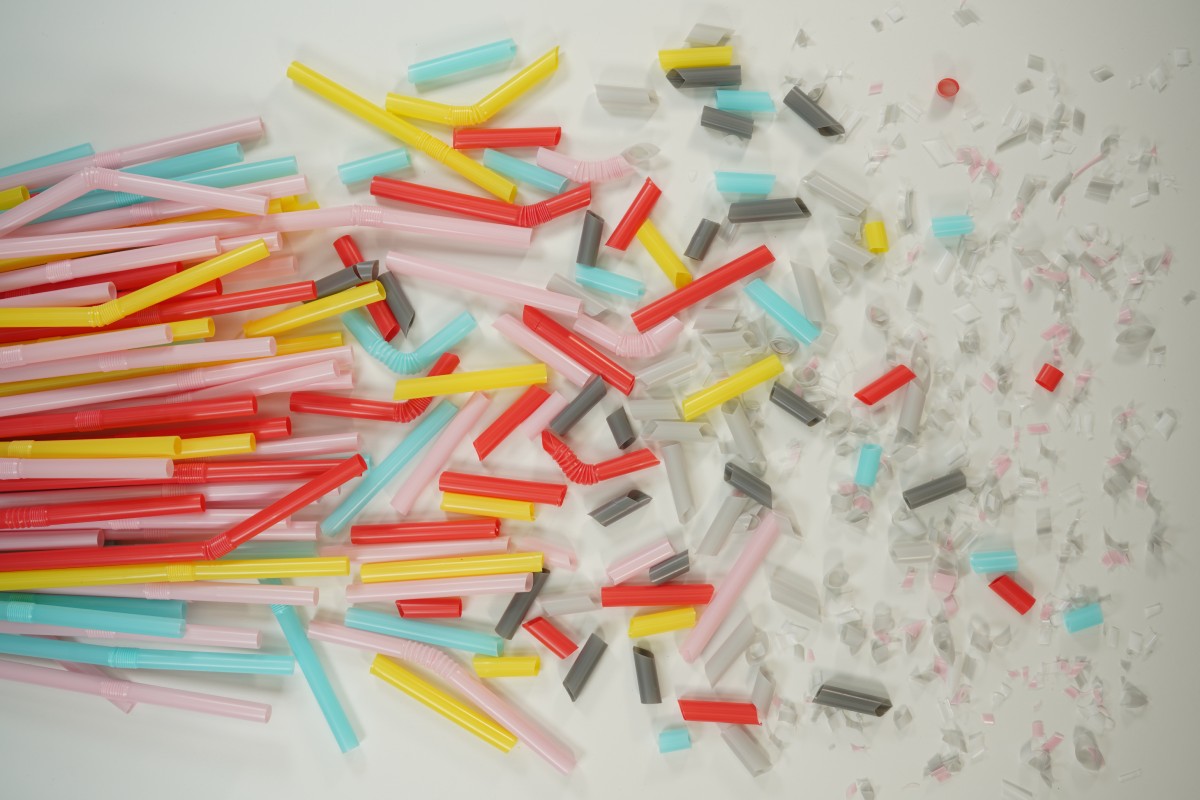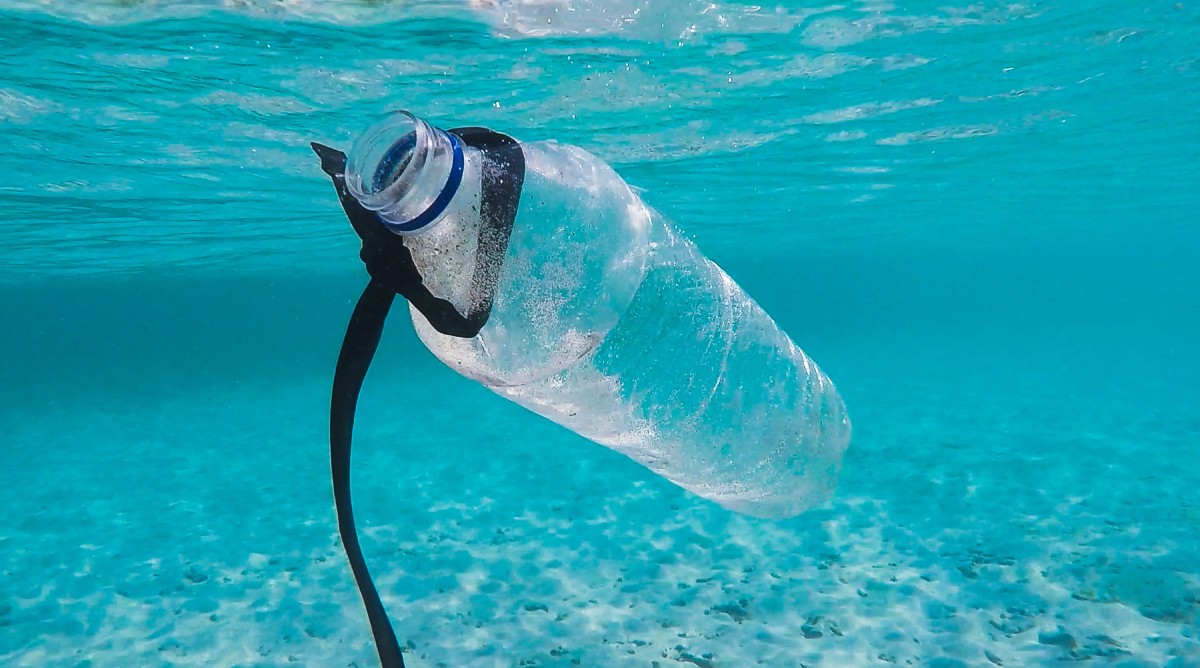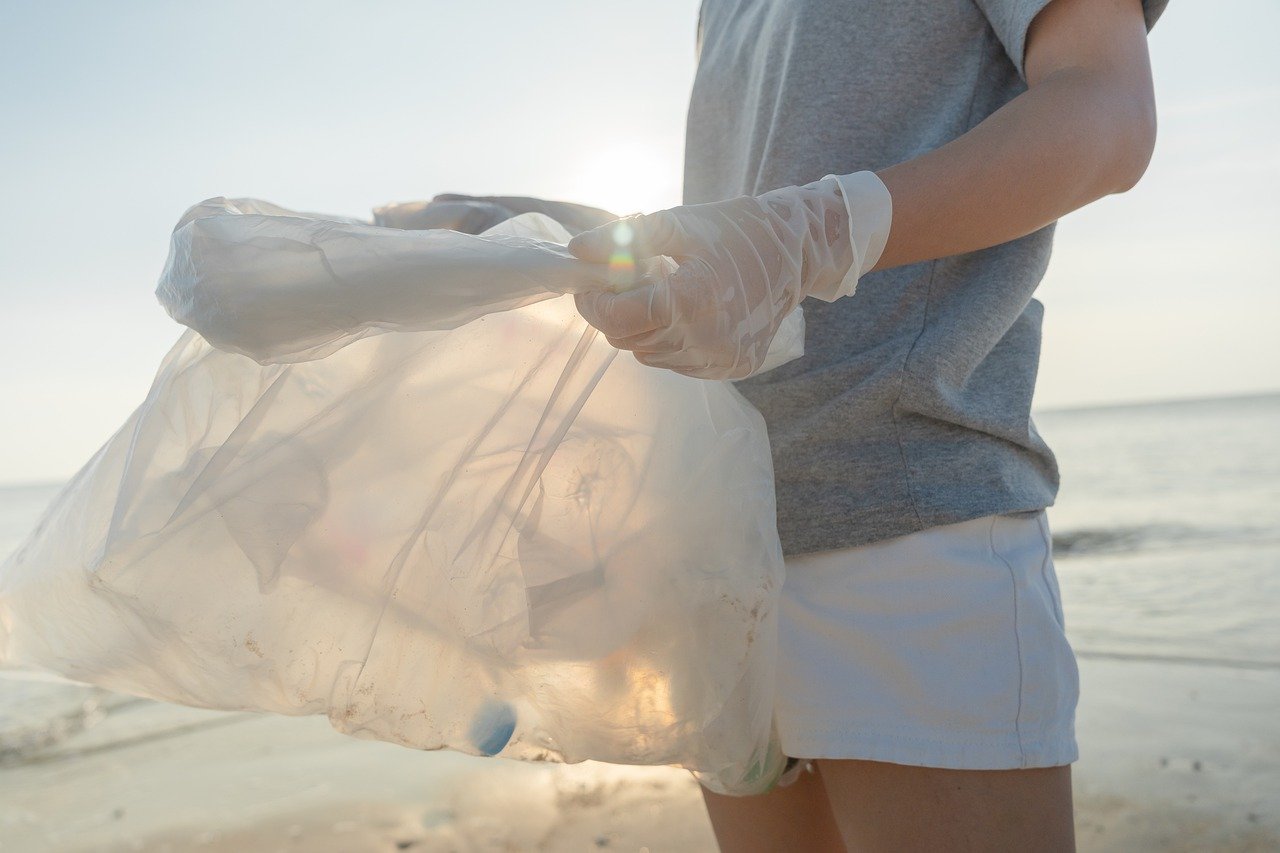Introduction
Microplastics have emerged as a pressing environmental and health concern in recent years. These tiny plastic particles, measuring less than 5 millimeters, have permeated our ecosystems and posed significant ecological and human health threats. In this section, we will briefly overview microplastics and emphasize the importance of understanding their impact.
Brief Overview of the Issue of Microplastics
Microplastics result from the degradation of more oversized plastic items or the immediate release of tiny plastic particles into the environment. They can come from various sources, including plastic waste, synthetic fibers, and microbeads used in personal care products. These particles, such as fibers, fragments, or microbeads, can take different forms. They can be found in both marine and freshwater ecosystems.
Due to their small size, microplastics are persistent and can remain in the environment for hundreds of years. They have the potential to accumulate in various habitats, including rivers, oceans, soil, and even the air we breathe. The widespread presence of microplastics has raised concerns about their ecological impact and the potential risks they pose to human health.
Importance of Understanding Their Impact on the Environment and Human Health
Understanding the impact of microplastics on the environment and human health is crucial for several reasons. Firstly, microplastics have been found in virtually every corner of the planet, from remote polar regions to the depths of the oceans. This widespread contamination has far-reaching consequences for ecosystems and the delicate balance of nature. Microplastics can enter the food chain at various levels, affecting the entire ecosystem, from plankton to larger marine organisms.
Secondly, microplastics can, directly and indirectly, affect wildlife and marine organisms. Animals can ingest them, causing physical harm, digestive issues, and impairing their overall health and reproductive capabilities. The accumulation of microplastics in their bodies can also lead to the transfer of toxic substances present in the plastics, further amplifying the negative impact.
Lastly, the potential risks of microplastics to human health are of growing concern. These particles can enter our bodies through multiple routes, including ingestion, inhalation, and dermal absorption. While the full extent of their health effects is still being studied, research has shown that microplastics can accumulate in human tissues and organs. This raises concerns about potential inflammation, cellular damage, and the transfer of toxic chemicals that may be associated with plastics.
Given the significant environmental and health implications, we must deepen our understanding of microplastics and take adequate measures to mitigate their impact. By exploring innovative solutions and implementing sustainable practices, we can work towards minimizing the release of microplastics into the environment and safeguarding both our ecosystems and human well-being.
What are Microplastics?
Microplastics are minuscule plastic particles that measure less than 5 millimeters in size. They result from the breakdown of more oversized plastic items or the immediate release of tiny plastic particles into the environment. In this section, we will explore the definition and sources of microplastics and the different types and forms they can take.
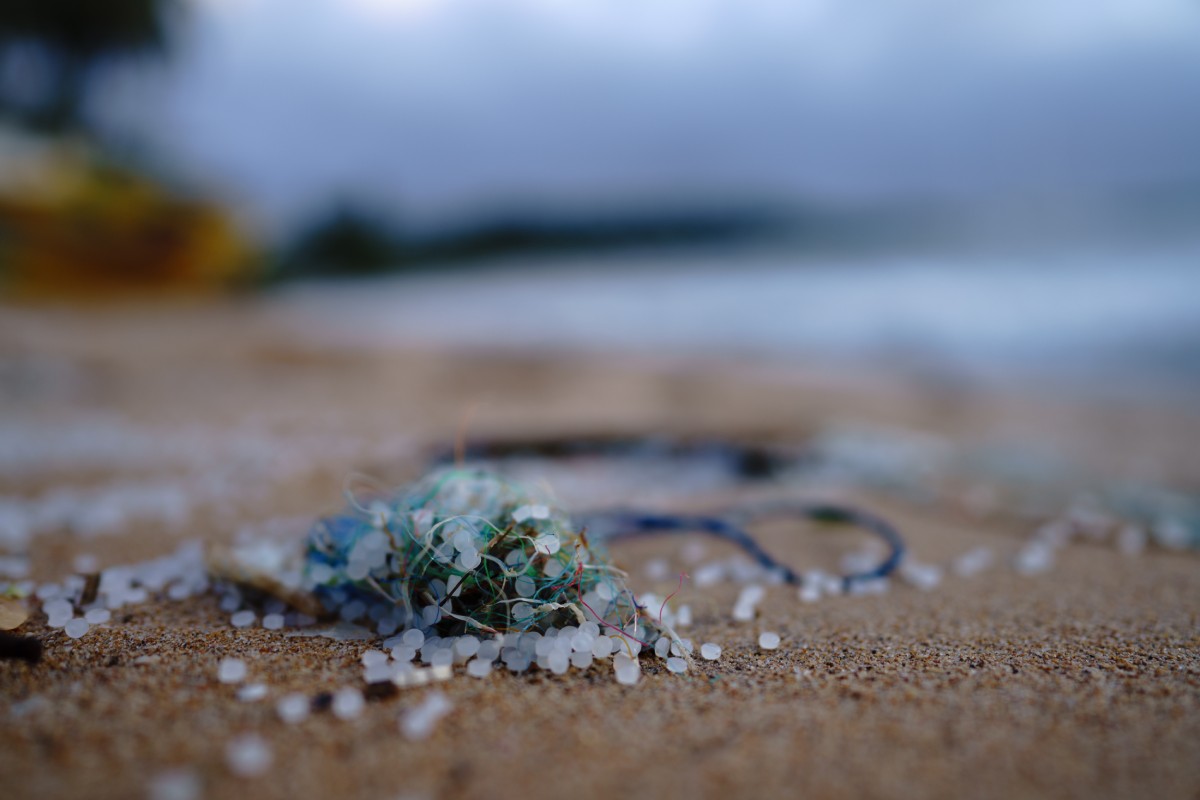
Definition and Sources of Microplastics
Microplastics are defined as small plastic particles that are less than 5 millimeters in size. They can be classified into two primary categories: primary microplastics and secondary microplastics.
-
Primary Microplastics: Primary microplastics are intentionally produced and used in various products. They are manufactured to be minor and directly released into the environment. Examples of primary microplastics include microbeads used in personal care products, such as face scrubs and toothpaste, as well as pellets used in manufacturing plastic products.
-
Secondary Microplastics: Secondary microplastics are formed due to the degradation and fragmentation of more oversized plastic items. Over time, plastic waste exposed to environmental factors like sunlight, heat, and mechanical action breaks down into smaller particles, eventually forming microplastics. These can come from various sources, including single-use plastic items, plastic packaging, synthetic textiles, and fishing gear.
The sources of microplastics are diverse and widespread. They can enter the environment through various pathways, including:
-
Plastic Waste: Improper disposal and mismanagement of plastic waste contribute significantly to the presence of microplastics in the environment. Plastic items that end up in landfills, rivers, or oceans gradually degrade into smaller particles, becoming microplastics.
-
Synthetic Fibers: Synthetic textiles, such as polyester and nylon, shed microfibers during washing and everyday use. These fibers enter wastewater systems and eventually enter rivers and oceans.
-
Industrial Processes: Plastic production, processing, and recycling industries can release microplastics directly into the environment. This includes the spillage or improper containment of plastic pellets and powders.
Different Types and Forms of Microplastics
Microplastics can take on various forms depending on their source and the processes that lead to their formation. They Fibers, fragments, and microbeads can be broadly categorized into three main types.
-
Fibers: Microplastic fibers are long and thin strands from textiles, such as clothing, carpets, and upholstery. These fibers can be shed during use and contribute to the presence of microplastics in the environment.
-
Fragments: Microplastic fragments are small broken pieces of oversized plastic items. These can result from degrading plastic bottles, packaging materials, or other plastic products. Fragmentation occurs over time due to exposure to environmental conditions, such as sunlight and mechanical stress.
-
Microbeads: Microbeads are tiny spherical particles used in personal care products and cosmetics. These beads are often made of plastic and are added to products like face scrubs, body washes, and toothpaste for exfoliating or abrasive purposes. Microbeads can be washed down the drain and find their way into water bodies.
It is important to note that microplastics come in various sizes, some visible to the naked eye. In contrast, others require microscopic examination for detection. Regardless of their size, the cumulative presence of microplastics in the environment poses a significant threat to ecosystems and human health.
In the following sections, we will delve into microplastics’ environmental impact and potential health risks and explore possible solutions to this pressing issue. Understanding the nature and sources of microplastics lays the foundation for developing effective strategies to mitigate their impact on the environment and human well-being.
Environmental Impact of Microplastics
Microplastics have a profound impact on the environment, particularly on marine and freshwater ecosystems. In this section, we will explore how microplastics contribute to pollution, harm wildlife and ecosystems, and disrupt food chains and biodiversity.
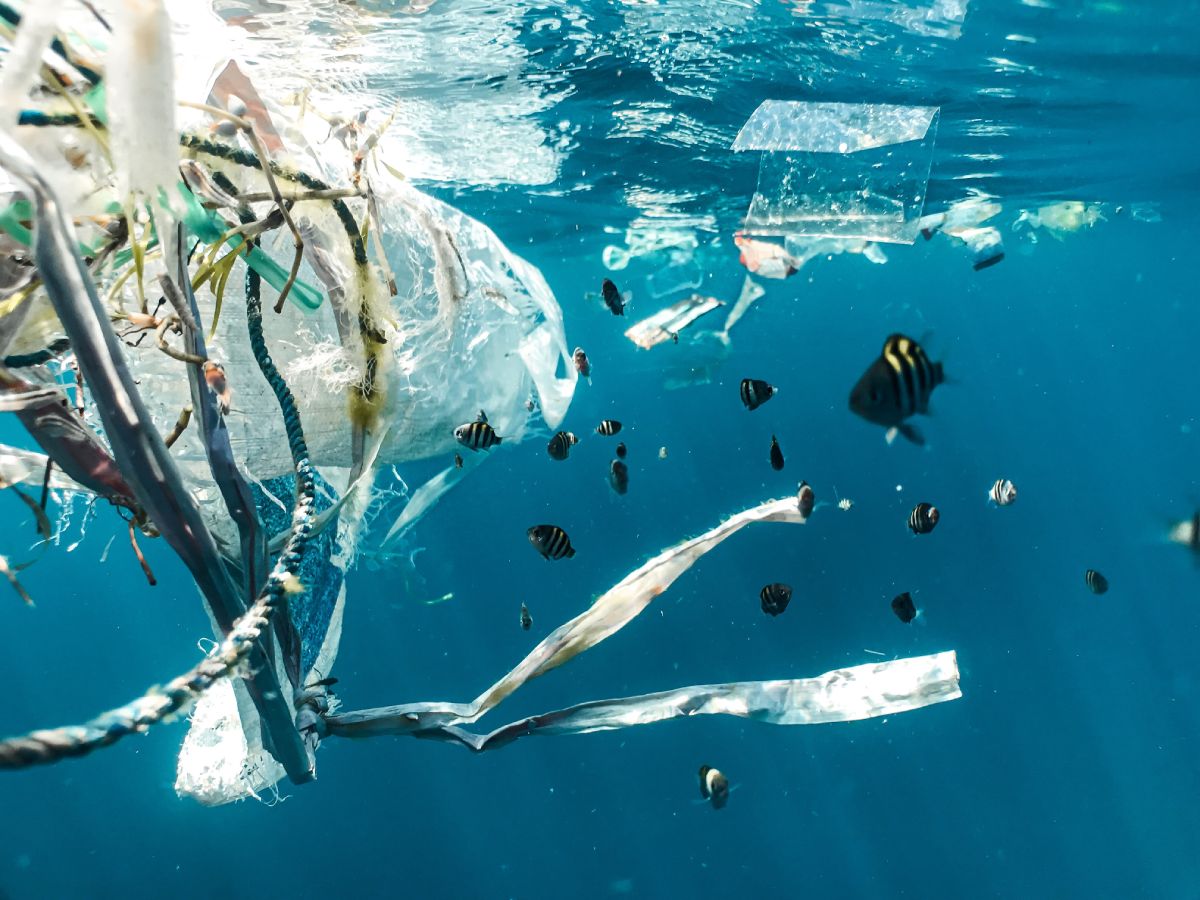
Pollution of Marine and Freshwater Ecosystems
Microplastics significantly threaten the health and integrity of marine and freshwater ecosystems. These tiny particles are pervasive in water bodies worldwide, from oceans and seas to rivers, lakes, and even groundwater.
When microplastics enter aquatic environments, they can persist for extended periods and accumulate in high concentrations. This pollution is detrimental to the water quality and overall ecosystem balance. Microplastics can absorb and carry other harmful pollutants, such as heavy metals and persistent organic pollutants, which can become concentrated on their surfaces. As a result, microplastics act as carriers and transporters of toxic substances, magnifying their impact on aquatic organisms.
Harm to Wildlife and Ecosystems
Microplastics in the environment pose a grave threat to wildlife and ecosystems. Marine organisms such as fish, seabirds, turtles, and marine mammals are particularly vulnerable to the ingestion and entanglement of microplastics.
-
Ingestion: Marine organisms often mistake microplastics for food, leading to unintended ingestion. Small filter feeders, like plankton and bivalves, consume microplastics suspended in the water column. These particles can then make their way up the food chain as larger predatory species consume the contaminated organisms. Ingested microplastics can cause physical damage to the digestive tract, block nutrient absorption, and lead to malnutrition and overall health deterioration.
-
Entanglement: Larger marine animals, such as seals, whales, and sea turtles, may become entangled in discarded fishing nets, ropes, and other plastic debris. This entanglement can restrict their movement, impair their ability to hunt or reproduce and cause injuries or suffocation.
The harm caused by microplastics extends beyond individual organisms to entire ecosystems. When key species are affected, it disrupts the delicate balance of the ecosystem, leading to cascading effects on other organisms and ecological processes.
Disruption of Food Chains and Biodiversity
Microplastics have the potential to disrupt food chains and impact biodiversity. As microplastics accumulate in the environment and are ingested by various organisms, they can interfere with the transfer of energy and nutrients within ecosystems.
-
Bioaccumulation: Microplastics can bioaccumulate, accumulating in higher concentrations as they move up the food chain. When organisms at lower trophic levels consume microplastics, the particles become concentrated in their tissues. Predatory species that rely on these lower-level organisms as their food source may consume a significant amount of microplastics, leading to further bioaccumulation. This can have long-term consequences for the health and reproduction of these species.
-
Biodiversity Loss: The disruption of food chains and the decline of key species due to microplastics can have ripple effects throughout ecosystems. When certain species are negatively impacted, it can lead to imbalances, reduced biodiversity, and potential species loss. This biodiversity loss has far-reaching ecological implications and can result in ecosystem instability and reduced resilience to environmental changes.
Addressing the environmental impact of microplastics is crucial for the conservation of aquatic ecosystems and the protection of wildlife. In the next section, we will explore the potential human health risks associated with microplastics and the importance of understanding their effects on human well-being.
Human Health Risks of Microplastics
Microplastics pose a significant threat to the environment and raise concerns about potential health risks to humans. In this section, we will explore the introduction to potential health hazards, the ingestion and absorption of microplastics, and the possible long-term health effects associated with exposure.
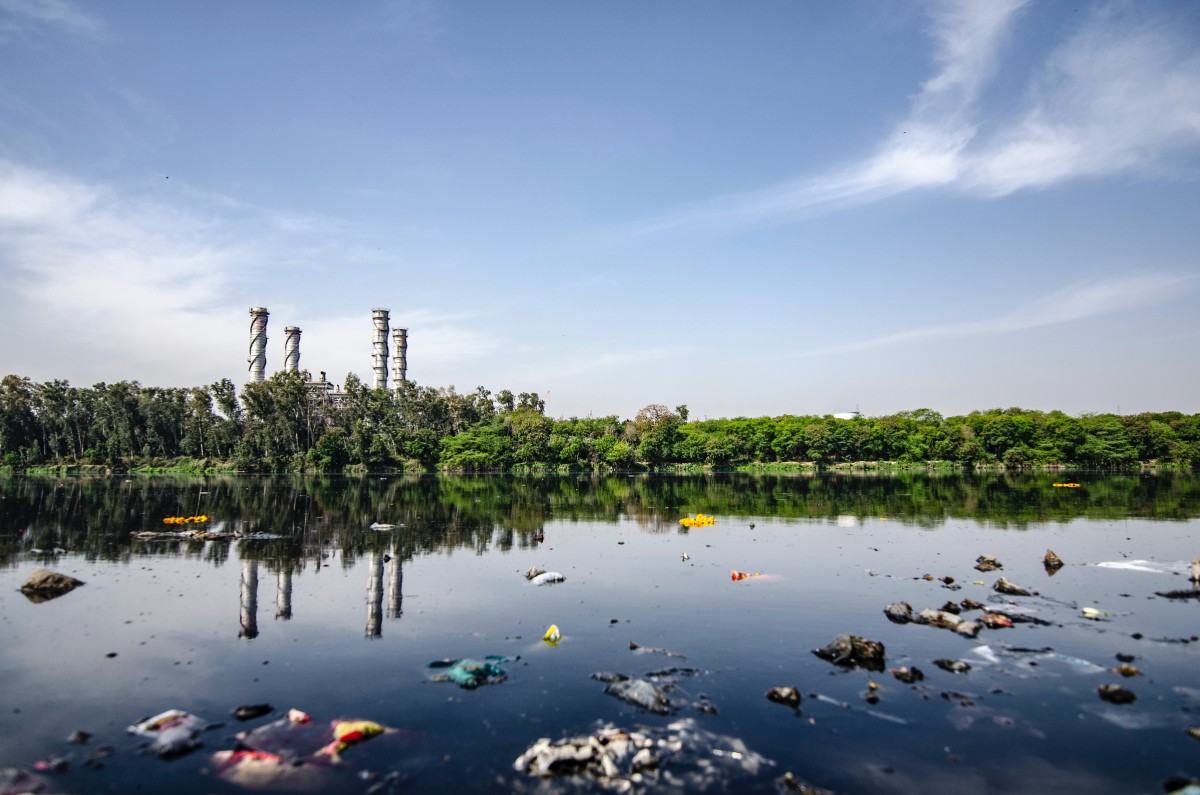
Introduction to Potential Health Hazards
The presence of microplastics in various aspects of our daily lives raises questions about their potential impact on human health. While research on specific health risks is still evolving, several areas of concern warrant attention.
One primary concern is the ability of microplastics to act as carriers of chemical contaminants. These contaminants can include harmful substances like persistent organic pollutants (POPs) and heavy metals, which may adsorb onto the surface of microplastics. When ingested or absorbed, these contaminants can enter the human body and cause adverse health effects.
Ingestion and Absorption of Microplastics
The ingestion and absorption of microplastics are two main pathways through which these particles may enter the human body.
-
Ingestion: Microplastics can enter the human body by consuming contaminated food and water. Seafood, for example, has been found to contain microplastics, as marine organisms mistake them for food. Additionally, microplastics can be present in bottled and tap water drinking water. Once ingested, microplastics can pass through the gastrointestinal tract, potentially leading to their absorption into the bloodstream.
-
Absorption: Microplastics can also come into contact with the skin and be absorbed through dermal exposure. Personal care products, such as exfoliating scrubs and cosmetic products, may contain microplastic particles that can be absorbed through the skin. Moreover, inhalation of airborne microplastics, such as those released from synthetic fibers or microplastic-contaminated dust, presents another potential route of exposure.
Possible Long-Term Health Effects
While the long-term health effects of microplastic exposure are still being investigated, several concerns have emerged from early studies and ongoing research.
-
Inflammation and Tissue Damage: Microplastics, particularly smaller particles, have the potential to induce inflammation and damage in tissues. Inflammatory responses may occur as the body’s defense mechanism against foreign particles, leading to chronic inflammation and associated health issues if sustained over time.
-
Chemical Exposure: Microplastics can carry chemical contaminants, such as POPs and heavy metals. Prolonged exposure to these substances through the ingestion or absorption of microplastics may result in the accumulation of toxins in the body, potentially causing systemic effects and adverse health outcomes.
-
Potential Toxic Effects: Some studies suggest that microplastics may have toxic effects on cellular function and biological processes. These effects can vary depending on the microplastics’ composition, size, and shape and the chemicals adsorbed onto their surfaces. However, further research is needed to fully understand the mechanisms and extent of these potential toxic effects.
It is important to note that while the presence of microplastics in the human body has been detected in various studies, the current understanding of their health effects is still evolving, and more research is needed to establish definitive conclusions.
Sources and Pathways of Microplastics
Microplastics originate from various sources and follow intricate pathways that introduce them into the environment and, subsequently, into the human body. In this section, we will explore microplastics’ primary and secondary sources and the routes through which they enter the environment and the human body.
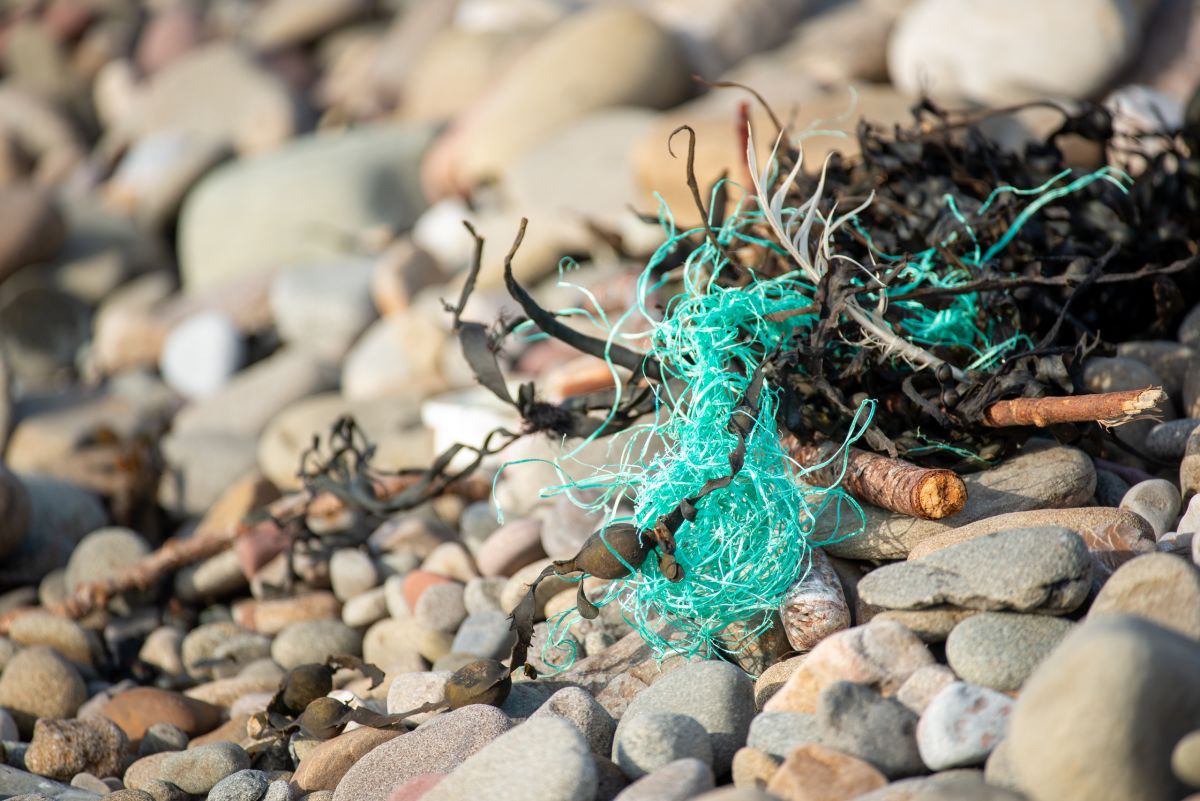
Primary and Secondary Sources of Microplastics
-
Primary Sources: Primary microplastics are intentionally manufactured as small particles for various products. These microplastics are typically less than 5mm in size. They are commonly found in exfoliating scrubs, microbeads in personal care products, and pellets used in plastic manufacturing. Additionally, synthetic textiles, like polyester and nylon, can release microplastic fibers into the environment during laundering.
-
Secondary Sources: Secondary microplastics are generated from the degradation and fragmentation of more oversized plastic items. Over time, plastic waste in the environment is subjected to mechanical, chemical, and environmental stressors, leading to their breakdown into smaller particles. For instance, plastic bags, bottles, and fishing nets can degrade into microplastics due to exposure to sunlight, waves, and other environmental forces.
Routes of Entry into the Environment and Human Body
-
Wastewater Discharge: One significant pathway through which microplastics enter the environment is wastewater discharge. Microplastics from various sources, including microbeads from personal care products and microfibers from washing synthetic textiles, are flushed down household drains and end up in wastewater treatment plants. However, these treatment plants may not effectively capture all microplastics, resulting in their release into rivers, lakes, and oceans.
-
Runoff and Stormwater: Rainwater and stormwater can carry microplastics from urban areas into water bodies. As plastic waste accumulates on streets and public spaces, precipitation can transport these particles through drainage systems and into nearby water sources.
-
Marine Litter: Improper disposal of plastic waste, particularly in coastal areas, leads to marine litter. Wind and water currents carry this litter into the oceans, where larger plastics break down into microplastics due to exposure to ultraviolet radiation and wave action.
-
Atmospheric Deposition: Microplastics can also be transported through the atmosphere and deposited back onto the Earth’s surface. Recent research has shown that microplastics are present in the air we breathe, with plastic particles being carried by wind and atmospheric processes.
Regarding human exposure, the pathways through which microplastics enter the human body include:
-
Food and Beverages: Microplastics can contaminate the food chain, especially in aquatic environments. Seafood, such as fish and shellfish, may ingest microplastics, which humans can consume through seafood. Additionally, microplastics have been detected in other food items, such as salt, sugar, and bottled water, which can also contribute to human exposure.
-
Drinking Water: Plastics are in tap and bottled water. These particles may enter water sources through various pathways, including wastewater discharge, runoff, and atmospheric deposition.
-
Inhalation: Microplastics are lightweight and can remain in the air. Inhalation of airborne microplastics are a potential route of exposure, particularly in indoor environments where synthetic materials and plastic products are common.
Understanding the sources and pathways of microplastics is crucial for developing practical solutions to mitigate their impact on the environment and human health. In the following section, we will delve into the detection and measurement techniques used to identify and quantify microplastics and the challenges associated with assessing their presence and concentration.
Detection and Measurement of Microplastics
Detecting and measuring microplastics is essential for understanding their distribution, abundance, and potential environmental and human health risks. In this section, we will explore the techniques used to identify and quantify microplastics and discuss the challenges associated with assessing their presence and concentration.
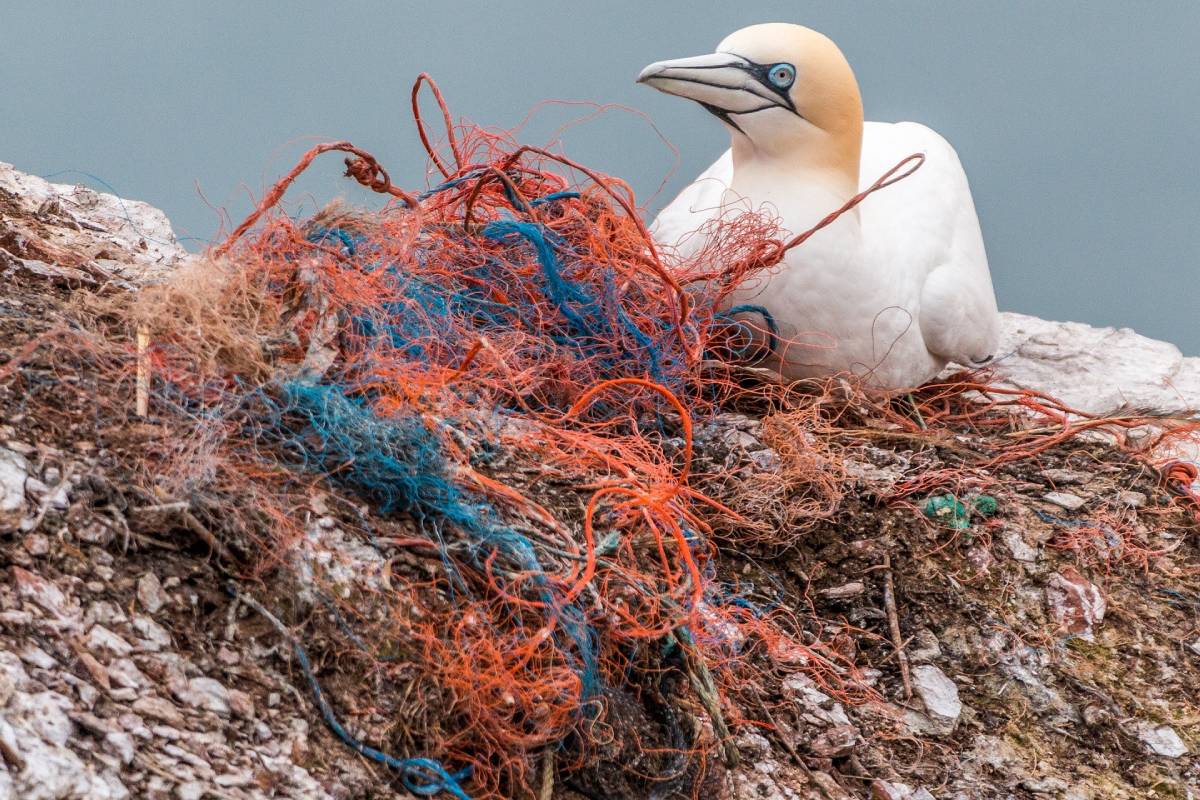
Techniques used to identify and quantify microplastics
-
Visual Identification: Microplastics can be visually identified under a microscope based on size, shape, and color. This method allows researchers to categorize microplastics into different types, such as fragments, fibers, or microbeads. However, more than visual identification is needed to provide precise information on the microplastics’ chemical composition and polymer types.
-
Spectroscopy: Spectroscopic techniques, such as Fourier-transform infrared spectroscopy (FTIR) and Raman spectroscopy, are commonly used to analyze the chemical composition of microplastics. These methods can help identify the polymer types present in the samples and differentiate them from other organic or inorganic particles. Spectroscopy provides valuable insights into the types of microplastics present but may require specialized equipment and expertise.
-
Microscopy Imaging: Scanning electron microscopy (SEM) and transmission electron microscopy (TEM) are powerful imaging techniques that allow for the detailed characterization of microplastics. These methods provide high-resolution images, enabling researchers to examine the surface features and morphology of microplastics. Microscopy techniques can also be combined with spectroscopic analysis to understand microplastic properties comprehensively.
-
Chemical Digestion: Chemical digestion involves treating samples with specific reagents that dissolve organic materials while leaving microplastics intact. This technique helps separate microplastics from other organic matter in environmental samples, enabling accurate quantification and analysis. Standard digestion methods include enzymatic digestion and oxidation.
-
Fluorescence Staining: Fluorescence staining is used to enhance the visibility of microplastics under a microscope. Fluorescent dyes can bind to microplastics, making them easier to detect and distinguish from other particles. This technique can improve the efficiency of microplastic identification and quantification, particularly for smaller particles.
Challenges in assessing their presence and concentration
-
Sample Collection: Collecting representative samples for microplastic analysis can be challenging due to their small size and widespread distribution. Proper sampling techniques must be employed to ensure accuracy and minimize contamination during collection, storage, and transportation.
-
Standardization: Currently, there need to be standardized methods for microplastic analysis, making it difficult to compare and integrate data from different studies. Establishing consistent protocols and reference materials is crucial for reliable and reproducible results.
-
Size Range: Microplastics can vary significantly, ranging from a few micrometers to several millimeters. Detecting and quantifying microplastics at the lower end of this size range can be technically demanding and may require advanced analytical techniques.
-
Fragmentation and Degradation: Microplastics can undergo environmental fragmentation and degradation processes, resulting in particles of various sizes and shapes. Assessing the concentration and distribution of microplastics in different size categories are crucial for understanding their potential ecological and health impacts.
-
Interpretation of Findings: Linking the presence and abundance of microplastics to their potential impacts on ecosystems and human health is a complex task. The effects of microplastics can vary depending on their chemical composition, size, shape, and surface properties. Further research is needed to understand the specific risks associated with different types of microplastics.
Despite these challenges, ongoing research and advancements in analytical techniques are improving our ability to detect and measure microplastics accurately. Standardization efforts and interdisciplinary collaborations are essential to establish robust methodologies and overcome the limitations in assessing the presence and concentration of microplastics.
Innovative Solutions to Address Microplastics
Microplastic pollution is a significant environmental and human health concern, and addressing this issue requires innovative solutions and collective efforts. In this section, we will explore various approaches and technologies aimed at tackling the problem of microplastics.

Prevention and reduction strategies
Prevention and reduction strategies play a crucial role in mitigating the release of microplastics into the environment. By addressing the sources and pathways of microplastics, we can effectively minimize their impact. Here are some innovative approaches:
-
Product Design: Designing products with alternative materials that are less likely to contribute to microplastic pollution is a proactive step. Researchers and manufacturers are exploring eco-friendly alternatives to plastic, such as biodegradable polymers and natural fibers to reduce the generation of microplastics.
-
Microbead Bans: Microbeads, commonly found in personal care and cosmetic products, have been recognized as a significant source of microplastic pollution. Many countries and regions have implemented bans on microbeads, substantially reducing their release into the environment.
-
Wastewater Treatment: Developing advanced wastewater treatment technologies can help capture and remove microplastics before being discharged into rivers, lakes, and oceans. Innovative filtration systems and separation techniques are being explored to remove microplastics from wastewater streams effectively.
-
Plastic Waste Management: Improving plastic waste management practices is essential for reducing plastic waste that ends up as microplastics in the environment. Recycling and properly disposing of plastic waste can prevent its fragmentation and subsequent release as microplastics.
Removal and cleanup technologies
Removing existing microplastics from the environment is a challenging task. Still, it holds promise in restoring ecosystems and reducing the risks to human health. Here are some innovative technologies being developed for microplastic cleanup:
-
Marine Cleanup Systems: Specialized devices like floating barriers and nets are designed to capture and collect floating microplastics in marine environments. These systems utilize ocean currents to trap and concentrate microplastics, facilitating their removal passively.
-
River Interception Technologies: Deploying barriers and filtration systems in rivers and waterways can help intercept and capture microplastics before they reach the oceans. These technologies target high-concentration areas and prevent microplastics from spreading further.
-
Nano- and Microplastic Removal: Innovative filtration technologies, including membrane filters and adsorbent materials, are being developed to capture and remove nano- and microplastics from water sources selectively. These technologies offer potential solutions for treating contaminated water supplies.
-
Bioremediation: Biological approaches, such as using microorganisms and enzymes, are being explored for the degradation and removal of microplastics. Researchers are investigating the natural capabilities of certain bacteria and fungi to break down microplastics, offering environmentally friendly cleanup options.
Policy and regulatory approaches
Implementing effective policies and regulations is crucial for addressing microplastic pollution on a broader scale. Here are some policy and regulatory measures being considered:
-
Microplastic Monitoring and Reporting: Governments and environmental agencies are working to establish monitoring programs to assess the presence and concentration of microplastics in various environments. This data can inform policy decisions and identify areas requiring intervention.
-
Extended Producer Responsibility: Encouraging manufacturers to take responsibility for the entire lifecycle of their products can incentivize the development of eco-friendly alternatives and promote responsible plastic production and disposal.
-
Plastic Reduction Targets: Setting targets for reducing plastic production and consumption can drive efforts to minimize the generation of microplastics. Governments and organizations are implementing measures to limit single-use plastics and promote sustainable packaging alternatives.
-
International Cooperation: Collaborative initiatives
between countries and international organizations are crucial for addressing the global nature of microplastic pollution. Sharing knowledge, best practices, and resources can lead to coordinated actions and practical solutions.
In conclusion, innovative solutions are emerging to tackle the issue of microplastics. By focusing on prevention, removal, and policy interventions, we can significantly reduce microplastic pollution. These collective efforts, public awareness, and individual actions are crucial to safeguarding the environment and protecting human health from the detrimental impacts of microplastics.
Role of Education and Awareness
Education and awareness play a vital role in addressing the issue of microplastics and promoting sustainable practices. Educating the public about microplastics and their impact on the environment and human health can foster a sense of responsibility and empower individuals to make informed choices. In this section, we will explore the importance of educating the public about microplastics and the significance of promoting responsible consumption and waste management.
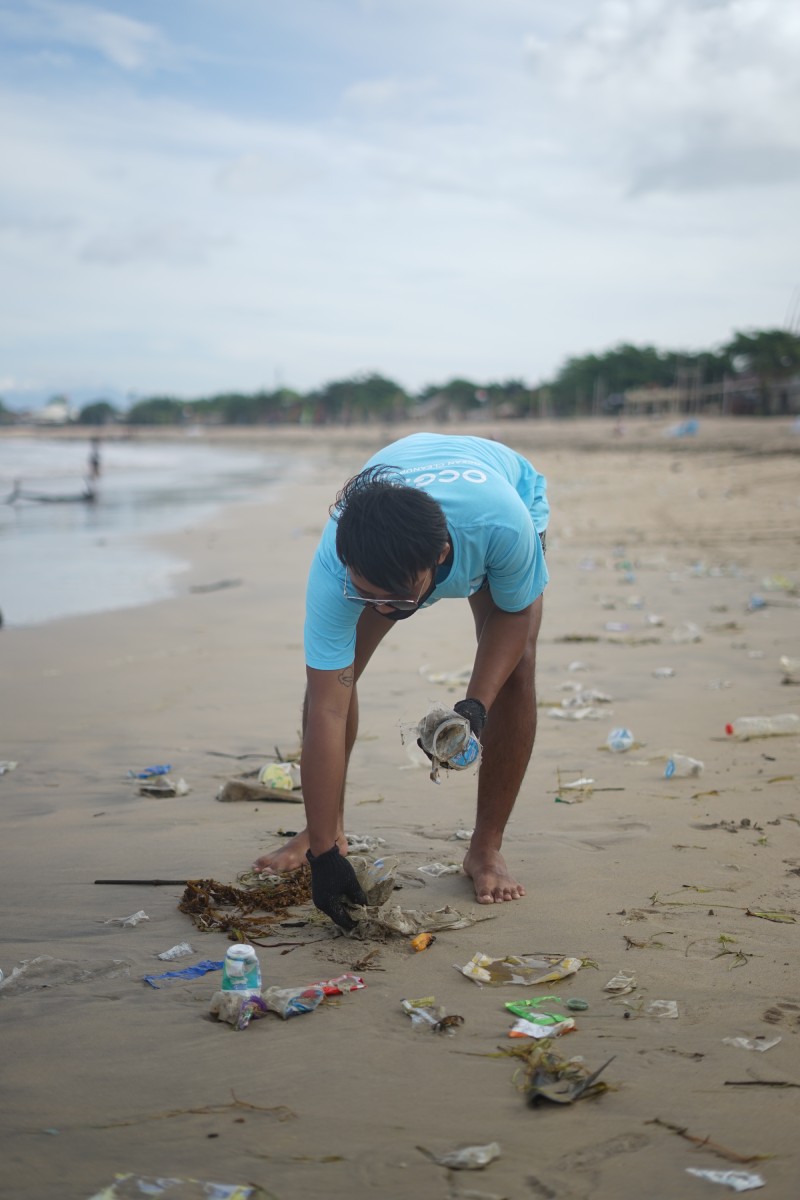
Importance of educating the public about microplastics
-
Raising Awareness: Many people are still unaware of the presence and consequences of microplastics. Educating the public about this issue is essential to create awareness and understanding of the potential harm caused by microplastics. Increasing awareness can encourage individuals to take action and support initiatives to reduce microplastic pollution.
-
Behavioral Change: Education provides individuals with the knowledge and understanding needed to change their behaviors. By learning about the sources of microplastics and their impact on the environment and human health, individuals can make conscious decisions to reduce their use of plastic, recycle responsibly, and adopt sustainable alternatives.
-
Empowering Individuals: Knowledge is power, and educating the public empowers individuals to become change agents. When people understand the consequences of their actions, they are more likely to take responsibility for their choices and contribute to collective efforts to reduce microplastic pollution.
-
Encouraging Advocacy: Education enables individuals to become advocates for change. By sharing their knowledge and spreading awareness about microplastics, individuals can influence their communities, businesses, and policymakers to adopt sustainable practices and implement policies to address microplastic pollution.
Promoting responsible consumption and waste management
-
Reducing Single-Use Plastics: Education can encourage individuals to reduce their consumption of single-use plastics, such as plastic bags, straws, and disposable packaging. We can significantly reduce the amount of plastic waste generated by promoting alternatives like reusable bags, bottles, and food containers.
-
Supporting Recycling Initiatives: Educating the public about proper recycling practices is crucial. Many must know the correct methods for sorting and disposing of plastic waste. By providing clear guidelines and raising awareness about recycling programs, we can increase recycling rates and prevent plastic from ending in the environment.
-
Encouraging Circular Economy: Education can promote the concept of a circular economy, where materials are reused, recycled, or repurposed instead of being discarded. By supporting businesses and initiatives that embrace circular economy principles, we can reduce the demand for new plastic production and minimize plastic waste generation.
-
Engaging Schools and Communities: Education about microplastics should be integrated into school curricula and community programs. Engaging young people and community members can instill lifelong values of environmental stewardship and responsible consumption. Activities like beach cleanups, workshops, and awareness campaigns can further enhance the impact of education and create a sense of collective responsibility.
We can create a ripple effect of positive change through education and awareness. Equipping individuals with knowledge, promoting responsible consumption, and fostering a culture of environmental consciousness, we can collectively tackle the challenge of microplastic pollution and work towards a cleaner and healthier future.
Collaborative Efforts and Future Outlook
Collaboration and collective action are essential in addressing the issue of microplastics. Governments, organizations, researchers and communities around the world are coming together to find solutions and mitigate the impact of microplastics on the environment and human health. In this section, we will explore the collaborative efforts and promising developments in this field, highlighting international initiatives, research collaborations, and areas for further exploration.
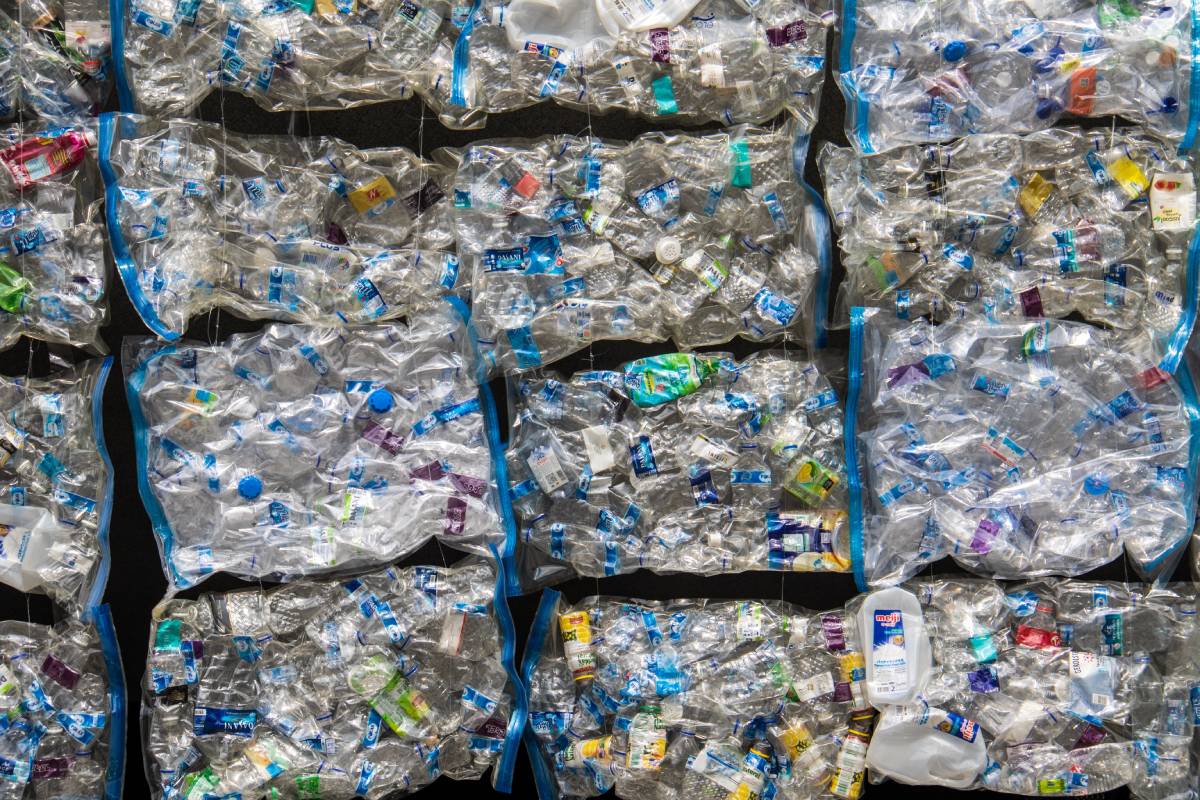
International initiatives and research collaborations
-
United Nations Environment Programme (UNEP): The UNEP has been actively working to address the issue of microplastics through various initiatives. The Global Partnership on Marine Litter, coordinated by UNEP, brings together governments, businesses, and civil society organizations to reduce marine litter, including microplastics. The UNEP also supports research and data collection efforts better to understand the sources, pathways, and impacts of microplastics.
-
Plastic Pollution Coalition (PPC): The PPC is a global alliance of organizations and individuals working towards a world free of plastic pollution. Through their collaborative efforts, they raise awareness, promote sustainable practices, and advocate for policy changes to reduce plastic waste, including microplastics. The PPC facilitates collaboration among its members and encourages knowledge-sharing to drive impactful solutions.
-
Research Collaborations: Scientists and researchers worldwide collaborate to advance our understanding of microplastics. They share data, methodologies, and research findings to uncover the extent of the problem, assess the risks, and develop innovative solutions. Collaborative research projects, such as international conferences and joint studies, foster multidisciplinary approaches and accelerate progress in this field.
Promising developments and areas for further exploration
-
Technological Innovations: Researchers and engineers are developing innovative technologies to detect, monitor, and remove microplastics from the environment. These technologies include advanced filtration systems, sensors, and robotic devices designed to target and remove microplastics from water bodies. Continued investment in research and development can lead to more efficient and scalable solutions.
-
Alternative Materials: Efforts are underway to explore and promote alternative materials that can replace plastic in various applications. Bio-based materials, such as biodegradable polymers and natural fibers, offer potential alternatives to conventional plastics. Exploring and supporting these alternatives can reduce plastic demand and minimize microplastic release into the environment.
-
Waste Management Strategies: Developing effective waste management strategies is crucial in preventing microplastics from entering the environment. Improving recycling infrastructure, implementing extended producer responsibility programs, and supporting the development of circular economy models can help reduce plastic waste and prevent microplastic pollution.
-
Policy and Regulation: Governments and policymakers play a vital role in addressing microplastics through policy and regulation. By implementing bans on single-use plastics, setting standards for plastic manufacturing and disposal, and supporting research and innovation, policymakers can create an enabling environment for reducing and managing microplastics.
-
Public Engagement: Engaging the public and encouraging individual action is essential for long-term success. By raising awareness, promoting responsible consumption habits, and encouraging behavior change, individuals can contribute to reducing the generation and release of microplastics. Citizen science initiatives, community clean-up programs and educational campaigns can mobilize individuals and communities toward a collective effort.
As we continue to collaborate and explore solutions, it is crucial to prioritize research, innovation, and implementing effective policies. By working together at the international, national, and community levels, we can mitigate the impact of microplastics and move towards a cleaner and more sustainable future.
Conclusion
Microplastics significantly threaten the environment and human health, highlighting the urgent need for action. In this blog post, we have explored the various aspects of microplastics, their environmental impact, human health risks, sources, detection methods, and innovative solutions. As we conclude, let’s recap the key takeaways, issue a call to action, and express optimism for finding practical solutions to mitigate microplastic pollution.
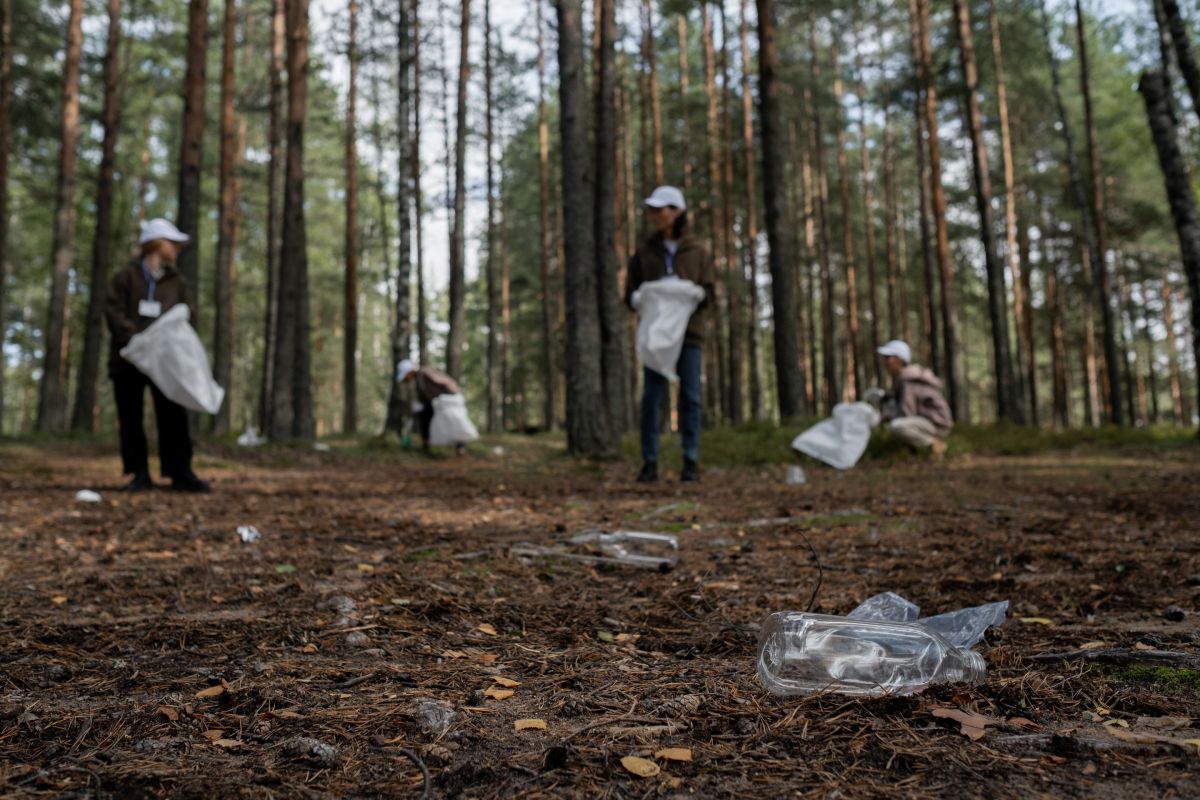
Recap of the impact of microplastics on the environment and human health
Microplastics have infiltrated our ecosystems, polluting marine and freshwater environments. These tiny particles, originating from various sources such as plastic fragmentation, microbeads, and synthetic fibers, threaten wildlife and ecosystems. Marine organisms mistake microplastics for food, leading to ingestion and potential health issues. Moreover, the accumulation of microplastics in food chains can disrupt ecosystems and harm biodiversity. Additionally, humans’ ingestion and absorption of microplastics raise concerns about potential long-term health effects, as these particles may carry harmful chemicals and act as carriers for pathogens.
Call to action for individuals and society to address the issue
The fight against microplastic pollution requires collective action from individuals, communities, industries, and governments. We all have a role in addressing this issue and protecting our environment and health. Here are some ways we can take action:
-
Reduce plastic consumption: Minimize single-use plastics and opt for reusable alternatives. Bring your bags, bottles, and containers to reduce plastic waste generation.
-
Practice responsible waste management: Ensure proper disposal of plastic waste by recycling and segregating waste at home and supporting recycling programs in your community.
-
Support initiatives and organizations: Get involved in local clean-up drives, support organizations working towards plastic pollution reduction, and raise awareness in your community.
-
Choose sustainable products: Look for products made from eco-friendly materials and free from microplastics. Support brands and businesses that prioritize sustainability and responsible manufacturing practices.
-
Advocate for change: Use your voice to advocate for policy changes and regulations that address the issue of microplastics. Engage with local policymakers, join environmental organizations, and participate in campaigns for plastic reduction and proper waste management.
Optimism for finding practical solutions to mitigate microplastic pollution
While the problem of microplastics may seem daunting, there is reason for optimism. The growing awareness of the issue has led to increased research, technological innovations, and policy changes. Scientists and researchers are developing advanced techniques to detect and measure microplastics, while engineers are designing innovative solutions for removal and cleanup. Collaboration among international organizations, research institutions, and communities fosters knowledge-sharing, and drives progress in this field.
By investing in research, supporting sustainable practices, and implementing effective policies, we can mitigate the impact of microplastics on the environment and human health. Through education and awareness, we can empower individuals to make conscious choices and promote responsible consumption and waste management.
In conclusion, the impact of microplastics on the environment and human health is a critical issue that requires immediate attention. By taking action at individual and collective levels, we can contribute to reducing microplastic pollution and work towards a cleaner and healthier planet. Let us join forces, embrace sustainable practices, and advocate for change to ensure a better future for ourselves and future generations.

